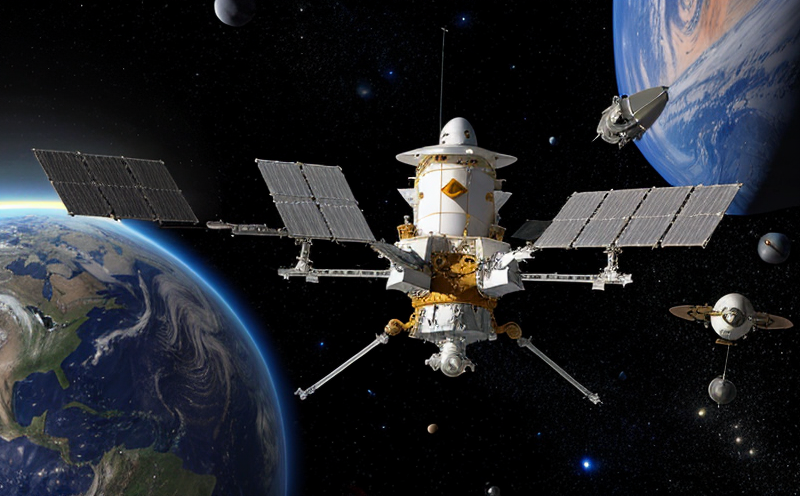Spacecraft Systems Testing: Ensuring Mission Success
The success of a spacecraft mission relies heavily on the thorough testing of its various systems before launch. Spacecraft systems testing involves verifying that each component functions as intended, ensuring that they interact correctly with one another, and validating their performance under anticipated operating conditions. This comprehensive approach helps minimize the risk of equipment failure during flight and reduces the likelihood of costly delays or mission cancellation.
The Importance of Spacecraft Systems Testing
Spacecraft systems testing is a critical phase in spacecraft development, as it enables engineers to identify and address potential issues before launch. A well-designed testing strategy can help prevent catastrophic failures, ensure data accuracy, and guarantee the safe operation of onboard instruments. Moreover, rigorous testing procedures enable space agencies and contractors to verify that their spacecraft meets the required performance specifications, thereby increasing confidence in mission success.
Types of Spacecraft Systems Testing
Several types of tests are conducted on spacecraft systems, each designed to evaluate specific aspects of system performance. Some of these tests include:
Environmental Testing: This type of testing simulates various environmental conditions, such as temperature extremes, vibration, and acoustic stress, to verify that the spacecraft can withstand the rigors of launch and operation in space.
Thermal Vacuum (TVAC) Testing: TVAC chambers are used to simulate the extreme temperatures found in space. These tests help determine how well components function under these conditions.
Vibration Testing: Spacecraft systems must be able to withstand the intense vibrations encountered during launch, so vibration testing is performed on individual components and entire spacecraft assemblies.
Detailed Testing Processes
The following bullet points provide a more detailed explanation of two specific types of space-craft systems testing:
Thermal Control System (TCS) Testing:
Thermal Cycling: This test simulates the temperature fluctuations that occur during a typical day-night cycle on the ground, as well as the longer-term thermal variations experienced in orbit.
Leakage Checks: Engineers use specialized instruments to detect any signs of leakage from thermally controlled compartments or lines.
Heat Transfer Testing: TCS performance is evaluated under various operating conditions, including steady-state and transient modes.
Some critical aspects of thermal control system testing include:
Ensuring accurate temperature measurements
Validating the thermal performance of sensitive components
Evaluating the effectiveness of radiators and heat exchangers
Data Handling and Communication System (DHCS) Testing:
Data Transmission: Engineers test data transmission capabilities to ensure that they meet mission requirements for data rate, accuracy, and reliability.
Error Detection and Correction: This test evaluates the ability of the DHCS to detect errors and recover from them without losing valuable scientific data.
Data Storage and Retrieval: The effectiveness of onboard storage devices is evaluated, including data retrieval from solid-state drives (SSDs) or magnetic tape.
Some essential considerations for data handling and communication system testing are:
Verifying that data transmission protocols meet mission requirements
Ensuring compatibility with spacecraft operating systems
Evaluating the impact of radiation effects on DHCS performance
QA Section:
Q: What is the typical timeline for conducting space-craft systems testing?
A: The duration and complexity of testing vary greatly depending on the specific spacecraft design, mission requirements, and test plan. Generally, thorough testing can take anywhere from several months to multiple years.
Q: How do engineers simulate launch conditions in a laboratory setting?
A: Engineers use various techniques, such as vibration tables or acoustic chambers, to reproduce the intense forces experienced during launch. Additionally, some facilities incorporate simulated gravity fields or rotating centrifuges to mimic the effects of space travel.
Q: Are there specific testing standards or regulations that spacecraft systems must adhere to?
A: Yes, international organizations like NASA and the European Space Agency (ESA) have established guidelines for testing various spacecraft components. For instance, radiation testing is often performed in accordance with NASAs Standard Test Procedure (STP).
Q: Can you provide an example of a notable spacecraft mission where systems testing played a crucial role?
A: The Mars Science Laboratory (Curiosity Rover) mission serves as an excellent example. Thorough testing of its onboard instruments, thermal control system, and communication equipment helped ensure the success of this historic expedition.
Q: Are there any common pitfalls or mistakes that can occur during spacecraft systems testing?
A: Some common issues include inadequate test planning, insufficient resources for testing, and an over-reliance on theoretical models rather than empirical data. Furthermore, failure to account for unusual operating conditions or unforeseen events can compromise system performance.
Q: Can a single malfunctioning component cause the entire mission to fail?
A: Yes, if critical components are not properly tested or maintained, it could lead to catastrophic failures during flight. As such, rigorous testing is essential for ensuring that each component meets its intended specifications and functions correctly within the overall system.
Q: How do engineers validate the performance of complex systems like navigation, propulsion, or life support?
A: Engineers employ a combination of analytical models, simulation tools, and experimental tests to verify the performance of these critical systems. For example, they might simulate various scenarios using software packages like SPICE (Simulation Program with Integrated Circuit Emphasis) or STK (Systems Tool Kit), followed by testing in laboratory environments.
Q: What are some emerging trends or technologies that are influencing spacecraft systems testing?
A: Advances in computational power and data analytics have enabled more efficient modeling, simulation, and test planning. Additionally, growing awareness of the impact of space debris has led to increased focus on testing radiation resistance and debris mitigation strategies.
By comprehensively understanding the intricacies of spacecraft systems testing, engineers can confidently prepare for and execute mission-critical operations in space.

































